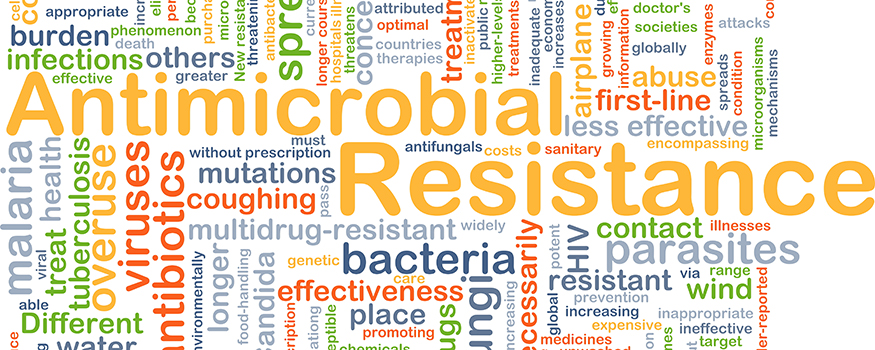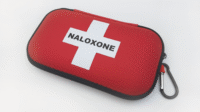Over the past decade, antibiotic resistance has increased and spread dramatically throughout the world. According to the Centers for Disease Control and Prevention (CDC), antibiotic use is the single most important factor leading to antibiotic resistance. The CDC estimates that every year, 2 million Americans develop serious infections involving bacteria that resist one or more antibiotics, and these infections kill at least 23,000 each year.
Antibiotic prescribing in U.S. acute-care hospitals is common—and often unwarranted. A 2014 study found that up to half of hospitalized patients received at least one antibiotic and in 30% to 50% of these cases, antibiotics were unnecessary or inappropriate. Such antibiotic misuse contributes to the emergence and spread of antibioticresistant organisms, such as methicillin-resistant Staphylococcus aureus and vancomycin-resistant enterococci. (See Unheeded warnings.)
If you’re a staff nurse, you’ve probably witnessed firsthand the consequences of inappropriate antibiotic use, ranging from development of Clostridium difficile (a well-recognized cause of healthcare-associated infectious diarrhea) to fatal infections with multidrugresistant pathogens against which no effective antibiotic therapy exists. What’s more, antibiotic-resistant infections add considerably to medical costs, with estimates as high as $35 billion a year.
Minimize medication errors in urgent care clinics
Using antibiotics effectively for acute-care patients
As a nurse, you need to be aware of the dramatic rise in various antibiotic-resistant gram-negative bacteria, including carbapenem- resistant Enterobacteriaceae (the “nightmare bacteria”) and multi drug- resistant strains of Pseudo monas aeruginosa and Acinetobacter baumannii. Infections caused by these organisms can significantly worsen clinical outcomes, with mortality rates up to four times higher than infections caused by susceptible strains. The potential for widespread and rapid transmission of these pathogens poses a great danger. (For illustrations of how antibacterial resistance develops and spreads, visit www.cdc.gov/drugresistance/pdf/2-2013-508.pdf.)
A leading health threat
The CDC has named the escalating threat of antibiotic resistance one of the top five health threats in the United States. In response, President Barack Obama issued an executive order directing a federal interagency task force to develop the National Action Plan for Combating Antibiotic-Resistant Bacteria. Released by the White House in March 2015, this document outlined federal actions to be taken over the next 5 years to slow the emergence of resistant bacteria and called for antibiotic stewardship programs in all acute-care hospitals by 2020.
To advance antibiotic stewardship, the White House convened a diverse group of stakeholders at the first-ever Forum on Antibiotic Stewardship in June 2015. Antibiotic stewardship refers to a set of interprofessional coordinated strategies to improve antibiotic use by ensuring that every patient gets an antibiotic only when clinically indicated—and only with the right antibiotic, at the right dose, administered by the right route, for the right duration. A growing body of evidence suggests hospital antibiotic stewardship programs decrease unnecessary antibiotic exposure, slow the development and spread of antibiotic resistance, improve patient outcomes, and save healthcare dollars.
Role of the staff nurse
Nursing’s perspective and active engagement are crucial for successful antibiotic stewardship programs. Staff nurses play an important role in addressing antibiotic resistance by participating in hospital antibiotic stewardship activities. Every day, we make critical decisions regarding safe antibiotic administration and monitoring processes and practice.
In 2014, the CDC released the Core Elements of Hospital Antibiotic Stewardship Programs. The ultimate goal of these programs is to achieve the best clinical outcomes for antibiotic use while minimizing antibiotic toxicity and other adverse events, thus limiting the emergence of antibiotic-resistant bacterial strains. Although the Core Elements report doesn’t explicitly state the role of nursing, it stands to reason that to achieve optimal success, antibiotic stewardship programs need the active participation of direct-care nurses. Nurses make up the largest segment of healthcare workers and stand at the center of patient care. We spend more time with patients than any other healthcare professionals. We form the cornerstone of the patient-care team, providing consistency, continuity, and coordination of care.
Frontline nurses also bear the crucial responsibility for administering antibiotics. Perhaps most important, in many cases the nurse is the last professional to evaluate the appropriateness of a prescribed medication before it’s administered.
How can you contribute to your hospital’s antibiotic stewardship program? Here are five key ways to influence antibiotic management decisions and help prevent further emergence of antibiotic resistance.
1. Ensure pertinent information about antibiotics is available at the point of care
In hospitals, antibiotics sometimes are continued unnecessarily simply because some clinicians caring for the patient aren’t sure why the antibiotic was initiated or how long it’s supposed to be continued. A direct-care nurse who doesn’t know why the patient is receiving an antibiotic might have difficulty asking if it should be stopped. If all healthcare team members have access to key information about their patients’ antibiotic therapy (including indication, dosage, and duration), nurses would be less reluctant to inquire about changing or stopping therapy when appropriate.
2. Question the antibiotic administration route
An early switch from I.V. antibiotic therapy to oral therapy helps shorten hospital stays and reduces the risk of infection from I.V. catheter access. Every day, assess your patient’s I.V. antibiotic therapy for appropriateness. If you have doubts, discuss a switch to oral therapy with the physician and other healthcare team members.
3. Reassess antibiotic therapy in 2 to 3 days
Generally, antibiotics are initiated before the patient’s full clinical picture is known. Usually within 2 to 3 days, additional information on microbiology and clinical status becomes available. When it does, consult with the physician or ask the care team during rounds if the prescribed antibiotic is still warranted or effective against the identified organism. If data suggest the patient needs the antibiotic, this can be a good time to advocate for narrow-spectrum antibiotic therapy and ask for clarification about the projected duration of therapy. Be sure to monitor the patient for side effects and toxicity.
4. Review antibiotic therapy when your patient develops a new C. difficile infection
The first step in treating a C. difficile infection is to evaluate the patient’s antibiotic therapy and stop all unnecessary antibiotics. If your patient acquires a new C. difficile diagnosis, make sure to review the prescribed antibiotic regimen and discuss with physician and care team whether all prescribed antibiotics are still indicated.
5. Reconcile antibiotics during all patient-care transitions
Patient-care delivery often involves moving the locus of care among sites and providers. To help reduce inappropriate antibiotic use during these transitions, evaluate the need for antibiotic therapy at your patient’s transition points—especially between such care settings as hospital and outpatient as well as between points within the facility, such as the intensive care unit and general care unit. Also, direct-care nurses should discuss the indication and duration for antibiotic therapy with other nurses during each change-of-shift report.
Reversing the tide
Improving antibiotic use in hospitals benefits individual patients and contributes to reducing antibiotic resistance nationally. Staff nurses are ideally positioned to contribute to antibiotic stewardship efforts and help reverse the incidence and potentially fatal consequences of antibiotic resistance.
Mary Lou Manning is an associate professor at Jefferson College of Nursing, Thomas Jefferson University in Philadelphia, Pennsylvania.
References
Centers for Disease Control and Prevention. About antimicrobial resistance. Updated September 8, 2015. cdc.gov/drugresistance/about.html
Centers for Disease Control and Prevention. Antibiotic resistance threats in the United States, 2013. Updated July 14, 2014. cdc.gov/drugresistance/threat-report-2013/
Centers for Disease Control and Prevention. Core elements of hospital antibiotic stewardship programs. Updated May 7, 2015. cdc.gov/getsmart/healthcare/implementation/core-elements.html
Centers for Disease Control and Prevention. Federal engagement in antibiotic resistance. Updated December 7, 2015. cdc.gov/drugresistance/federal-engagement-in-AR/index.html
Centers for Disease Control and Prevention. Vital signs: Improving antibiotic use among hospitalized patients. MMWR. 2014;63(9):194-200. cdc.gov/mmwr/preview/mmwrhtml/mm6309a4.htm?s_cid=mm6309a4_w
Centers for Disease Control and Prevention. Vital signs: Carbapenem-resistant Enterobacteriaceae. MMWR. 2014;62(9):165-70. cdc.gov/mmwr/preview/mmwrhtml/mm6209a3.htm
Gillespie E, Rodrigues A, Wright L, Williams N, Stuart RL. Improving antibiotic stewardship by involving nurses. Am J Infect Control. 2013;41(4):365-7.
Lautenbach E, Perencevich EN. Addressing the emergence and impact of multidrug-resistant gram-negative organisms: a critical focus for the next decade. Infect Control Hosp Epidemiol. 2014;35(4):333-5.
Manning ML, Giannuzzi D. Keeping patients safe: antibiotic resistance and the role of nurse executives in antibiotic stewardship. J Nurs Adm. 2015;45(2):67-9.
Olans RD, Nicholas PK, Hanley D, DeMaria A Jr. Defining a role for nursing education in staff nurse participation in antimicrobial stewardship. J Contin Educ Nurs. 2015;46(7):318-21.
Pollak LA, Gould CV, Srinivasan A. If not now, when? Seizing the moment for antibiotic stewardship. Infect Control Hosp Epidemiol. 2013;34(2):117-8.
The White House. Fact sheet: Over 150 animal and health stakeholders join White House efforts to combat antibiotic resistance. June 2, 2015. whitehouse.gov/the-press-office/2015/06/02/fact-sheet-over-150-animal-and-health-stakeholders-join-white-house-effo
The White House. National action plan for combating antibiotic-resistant bacteria. March 2015. whitehouse.gov/sites/default/files/docs/national_action_plan_for_combating_antibotic-resistant_bacteria.pdf


















